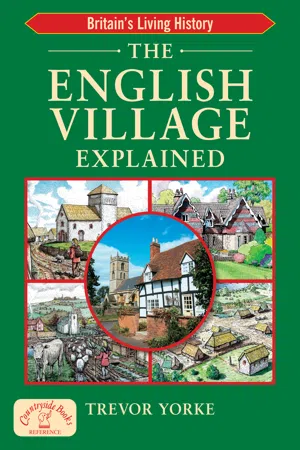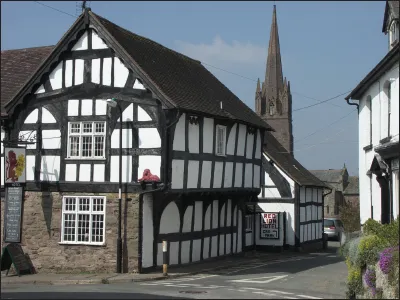![]()
SECTION III
QUICK
REFERENCE
GUIDE
![]()
GLOSSARY
The meanings listed here relate to their use in this book, they may have alternative meanings as well.
Anglican: An adjective to describe the Church of England.
Anglo-Saxon: The period from the departure of the Roman Legions in AD 410 to the Norman Conquest in 1066. Named after the Angles and Saxons, two of the Germanic groups who settled here.
Apse: The semi-circular or polygonal extension of a chancel on some Saxon and Norman churches. Also replicated on many Victorian churches.
Assarting: The clearing out of trees to make fields for crops.
Byre: The half of a medieval long-house in which the livestock were kept.
Capital: The decorative top of a column.
Classical: In this book referring to the style of building popular in the 17th to 19th centuries based upon Ancient Greek and Roman architecture.
Dark Ages: The term which historians applied to the 5th to 7th centuries AD due to the lack of written sources and archaeological finds.
Daub: A mix of mud, clay, straw and other ingredients applied to wattle infill in a timber-framed building.
Ecclesiastical: Of the church.
Edifice: A large imposing building (in this case a church).
Façade: Front or face of a building.
Fallow: Land which has been ploughed but left uncultivated for a period of time to return nutrients to the soil.
Farmstead: The farm and its associated buildings.
Gothic: The period of medieval architecture where the pointed arch was used, revived in the late 18th and 19th centuries.
Hamlet: A small settlement of approximately 3 to 19 households.
Hearth: The area on a floor or within a fireplace on which the fire is raised.
Heathen: People not attached to any main religion.
Holloway: A road or track where constant wear has formed a narrow cutting.
Hunter-gatherers: Pre-farming people dating from around 10,000 to 4,500 BC.
Husbandry: The caring and nurturing of animals and the land, used to describe farming mainly from the 15th to 17th centuries.
Linear: Something set in a line, or narrow and long shape.
Longhouse: A low, long house, one room deep usually with a central doorway and passage with a living room one side and a byre the other.
Manor: An estate under the feudal control of a lord. The building from which the estate was managed was the manor house.
Mere: A lake formed by melted blocks of ice and covered by later deposits.
Neolithic: The New Stone Age from around 4500 to 2500 BC.
Paling: A fence made from vertical timbers.
Park Pale: A fence formed on top of a bank to keep deer within a park.
Polite architecture: Elegant buildings designed by an architect which could be made using methods and materials from outside of the locality.
Reeve: An administrator of land used by Saxon and Norman kings to enforce their rule. The Shire Reeve became known as the Sheriff.
Renaissance: The revival of Classical art and architecture from the 14th century in Europe and 16th century in England.
Rood: A Saxon word for a crucifix. The rood screen in a church separate the nave and chancel and may have a large cross fixed above it.
Secular: Buildings and organisations concerned with matters of the State.
Sink holes: Depressions sometimes filled with water which have been caused by acidic water dissolving the alkaline rock (usually limestone).
Tithing/Township: An ancient secular administrative area as opposed to the parish which was the e...


